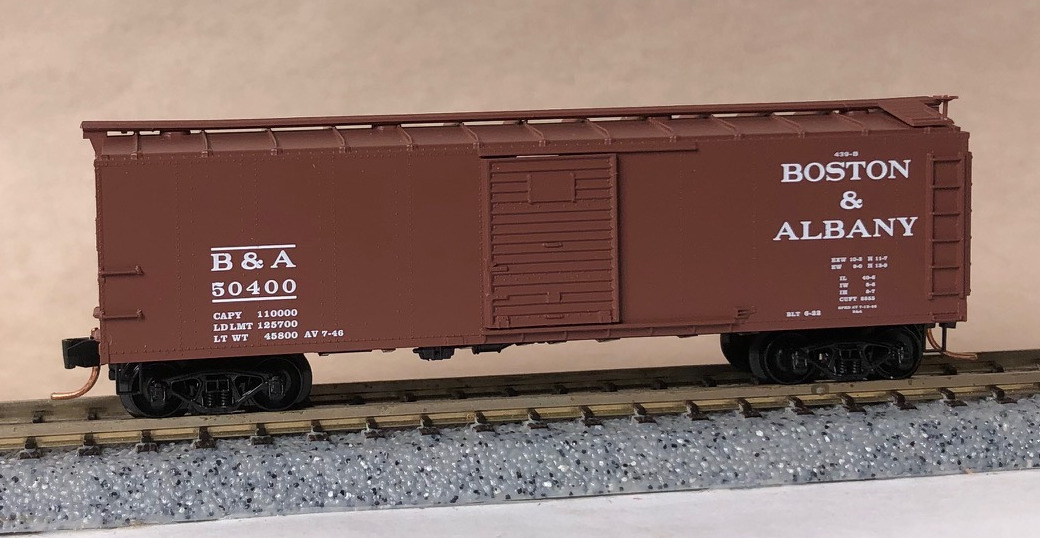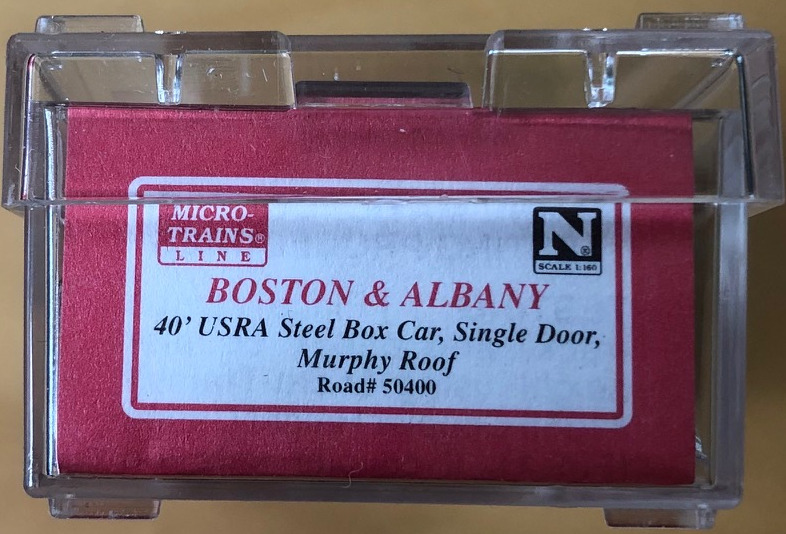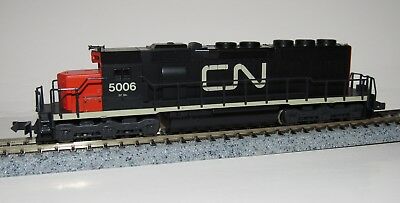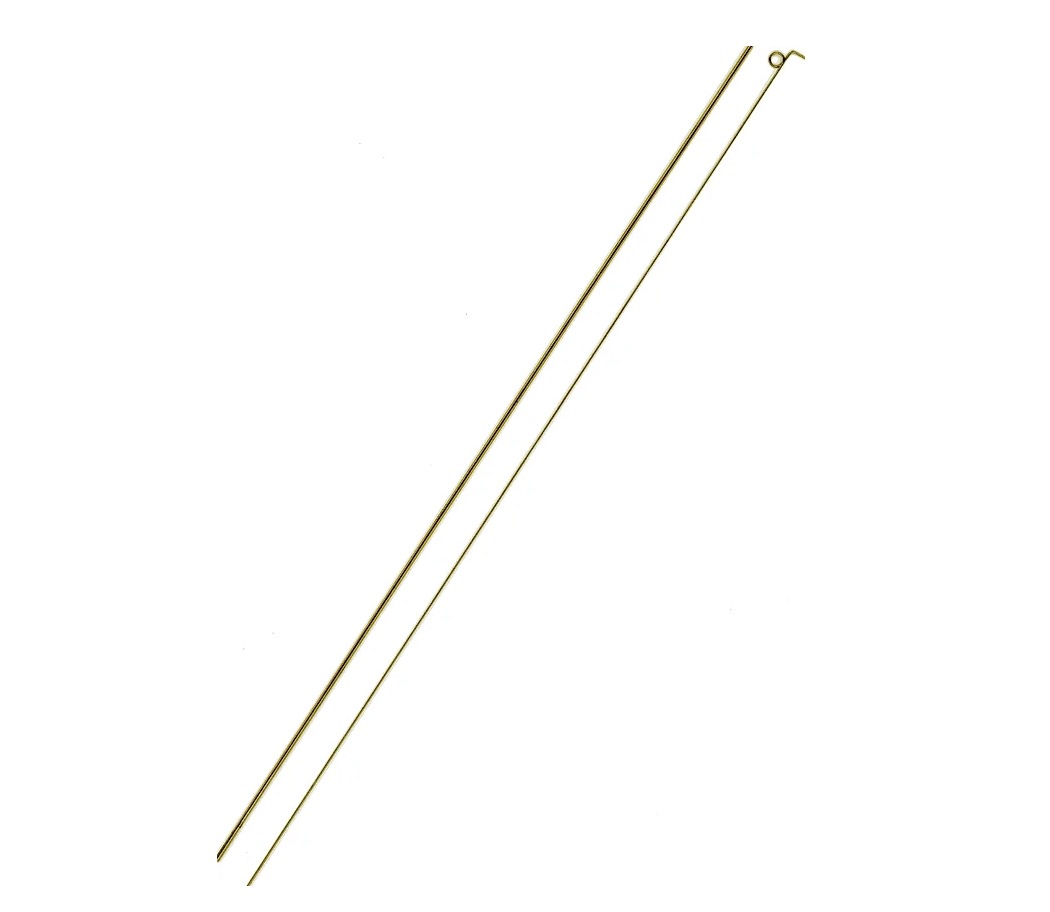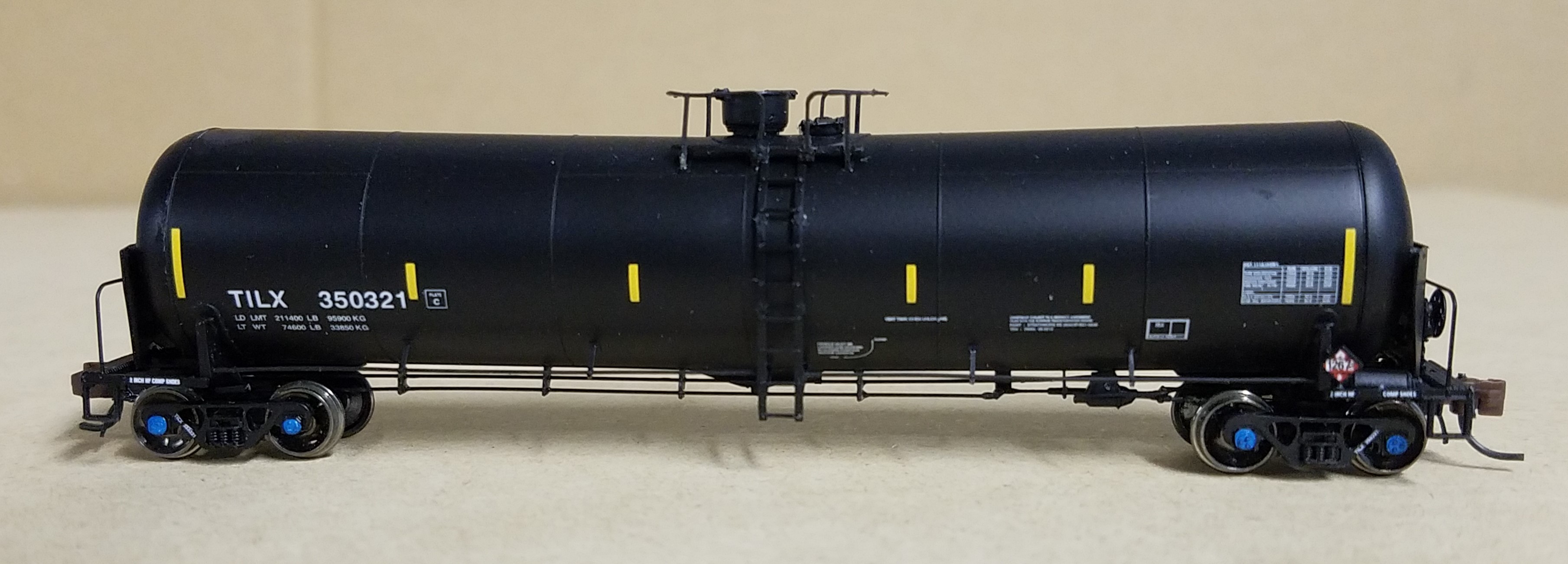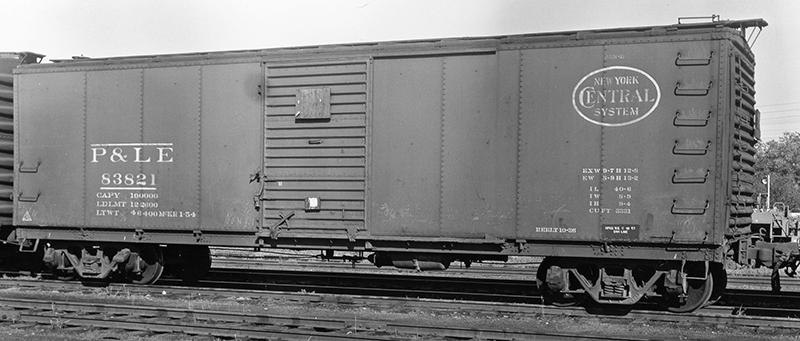Specific Item Information: Only available as part of 3-Pack NSC 04-118.
Prototype History: By the beginning of WWII, the majority of the classic USRA double-sheathed box cars and their clones were rebuilt with steel sides. More rebuilds followed in the late 1940s and early 1950s. By late 1948, close 14,000 of the original 24,500 USRA double-sheathed cars had been rebuilt with quite a degree of variation including the end, door and underframe. These steel side rebuilds were far more popular than their single-sheathed counterparts.
Road Name History: 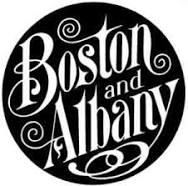 The B&A was the result of two mergers accomplished in phases between 1867 and 1870. The merged lines included the Hudson & Boston Railroad, the Albany & West Stockbridge, the Western Railroad (by that time a paper railroad operated by the A&WS), the Hudson & Berkshire and the Boston & Worcester. Construction continued until late in the century. The result was a line running from Boston, Massachusetts west to Worcester, Springfield, Pittsfield and on to Albany, New York, plus a number of branches. In 1900 the B&A was leased for 99 years by the New York Central & Hudson River, In 1914, the lease passed to New York Central Railroad. As during the NYC&HR period, Boston & Albany retained their own corporate identity during NYC’s lease although locomotive and rolling stock design practices followed those of parent NYC. Lima Locomotive Works worked with Boston & Albany to develop the 2-8-4 wheel arrangement for locomotives in fast, heavy freight service. This wheel arrangement was named the Berkshire in honor of B&A’s route through the Berkshire Mountains. Commuter traffic on the Boston end was extensive with a 4 or more track mainline required from the city as far as Riverside and triple track all the way to Framingham. For many years, tank engines were used for commuter operations so the power could run in reverse at speed to return to their home terminal. The largest of these were 4-6-6T’s. Around 1951, New York Central lettering began to replace Boston & Albany lettering on locomotives and cars. The B&A was officially merged into NYC in 1961 but many freight cars assigned to specific services continued to receive B&A reporting marks for many more years.
The B&A was the result of two mergers accomplished in phases between 1867 and 1870. The merged lines included the Hudson & Boston Railroad, the Albany & West Stockbridge, the Western Railroad (by that time a paper railroad operated by the A&WS), the Hudson & Berkshire and the Boston & Worcester. Construction continued until late in the century. The result was a line running from Boston, Massachusetts west to Worcester, Springfield, Pittsfield and on to Albany, New York, plus a number of branches. In 1900 the B&A was leased for 99 years by the New York Central & Hudson River, In 1914, the lease passed to New York Central Railroad. As during the NYC&HR period, Boston & Albany retained their own corporate identity during NYC’s lease although locomotive and rolling stock design practices followed those of parent NYC. Lima Locomotive Works worked with Boston & Albany to develop the 2-8-4 wheel arrangement for locomotives in fast, heavy freight service. This wheel arrangement was named the Berkshire in honor of B&A’s route through the Berkshire Mountains. Commuter traffic on the Boston end was extensive with a 4 or more track mainline required from the city as far as Riverside and triple track all the way to Framingham. For many years, tank engines were used for commuter operations so the power could run in reverse at speed to return to their home terminal. The largest of these were 4-6-6T’s. Around 1951, New York Central lettering began to replace Boston & Albany lettering on locomotives and cars. The B&A was officially merged into NYC in 1961 but many freight cars assigned to specific services continued to receive B&A reporting marks for many more years.

Brand/Importer Information: Micro-Trains is the brand name used by both Kadee Quality Products and Micro-Trains Line. For a history of the relationship between the brand and the two companies, please consult our Micro-Trains Collector's Guide.
Manufacturer Information:  Micro-Trains Line split off from Kadee Quality Products in 1990. Kadee Quality Products originally got involved in N-Scale by producing a scaled-down version of their successful HO Magne-Matic knuckle coupler system. This coupler was superior to the ubiquitous 'Rapido' style coupler due to two primary factors: superior realistic appearance and the ability to automatically uncouple when stopped over a magnet embedded in a section of track. The success of these couplers in N-Scale quickly translated to the production of trucks, wheels and in 1972 a release of ready-to-run box cars.
Micro-Trains Line split off from Kadee Quality Products in 1990. Kadee Quality Products originally got involved in N-Scale by producing a scaled-down version of their successful HO Magne-Matic knuckle coupler system. This coupler was superior to the ubiquitous 'Rapido' style coupler due to two primary factors: superior realistic appearance and the ability to automatically uncouple when stopped over a magnet embedded in a section of track. The success of these couplers in N-Scale quickly translated to the production of trucks, wheels and in 1972 a release of ready-to-run box cars.
Micro-Trains Line Co. split off from Kadee in 1990 to form a completely independent company. For this reason, products from this company can appear with labels from both enterprises. Due to the nature of production idiosyncrasies and various random factors, the rolling stock from Micro-Trains can have all sorts of interesting variations in both their packaging as well as the products themselves. When acquiring an MTL product it is very important to understand these important production variations that can greatly enhance (or decrease) the value of your purchase.
Please consult our Micro-Trains Collector's Guide

Micro-Trains Line Co. split off from Kadee in 1990 to form a completely independent company. For this reason, products from this company can appear with labels from both enterprises. Due to the nature of production idiosyncrasies and various random factors, the rolling stock from Micro-Trains can have all sorts of interesting variations in both their packaging as well as the products themselves. When acquiring an MTL product it is very important to understand these important production variations that can greatly enhance (or decrease) the value of your purchase.
Please consult our Micro-Trains Collector's Guide
Item created by: gdm on 2020-01-07 14:20:46. Last edited by Lethe on 2020-05-07 00:00:00
If you see errors or missing data in this entry, please feel free to log in and edit it. Anyone with a Gmail account can log in instantly.
If you see errors or missing data in this entry, please feel free to log in and edit it. Anyone with a Gmail account can log in instantly.


